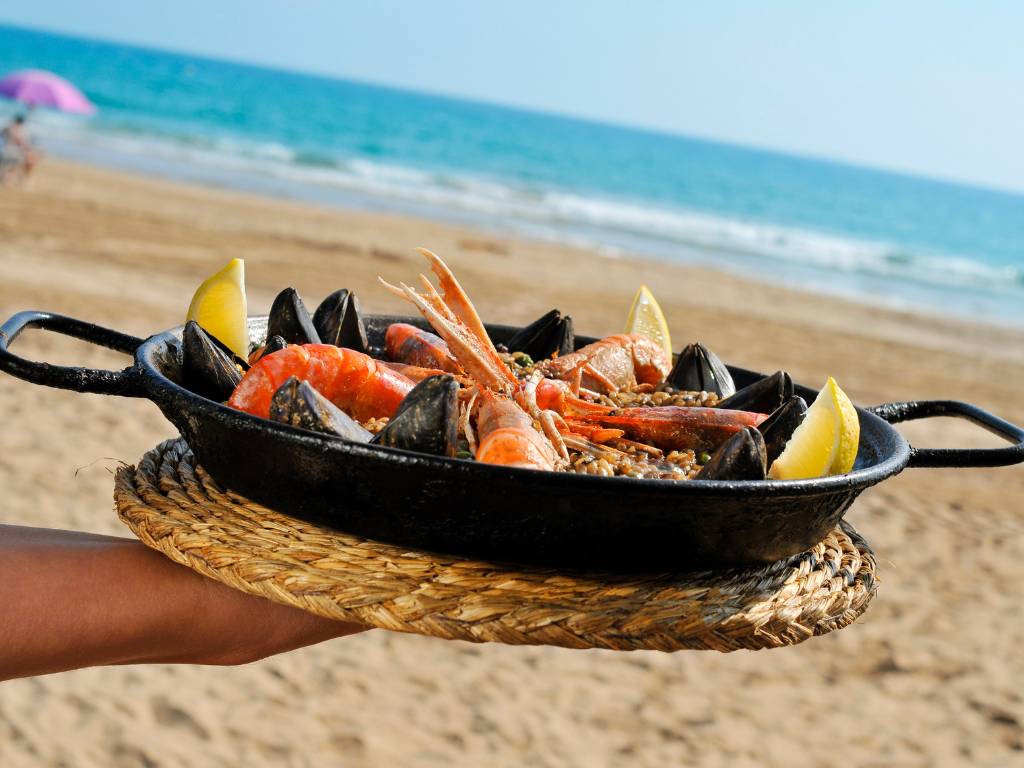The history of Spanish Paella

Spanish paella is one of the most iconic dishes in Spanish cuisine and a symbol of Spanish gastronomy worldwide. Its history is rich and fascinating, spanning centuries and showcasing the development of culinary traditions in Spain.
The Rise of Rice
The history of paella begins with the grains of rice, which have been domesticated plants in Spain since the time of the Romans. During the Middle Ages, rice became a staple in much of Spain, especially in the regions of Valencia and Murcia on their eastern coast. The climate and soils there were ideal for cultivating rice, leading to the development of rice paddies.
The Rice-Based Dish of Farm Workers
During the Middle Ages, farm workers often prepared simple dishes using seasonal ingredients and rice, which was readily available. They combined rice with various ingredients such as meat, fish, and vegetables and cooked everything in a large pan over an open fire. This cooking method allowed workers to create delicious meals with their limited resources.
The Influence of Arab Cuisine
During the Middle Ages, Spain was under Arab influence, and this contact with Arab cuisine introduced some of the characteristics of modern paella. Ingredients like olive oil, saffron, and pepper became standard for paella.
It is also believed that the word “paella” comes from the Arabic word “baqiyah,” which means “leftovers” or “mixture.” This reflects the way paella was prepared with different ingredients that were available at a given time.
Modern Paella and Regional Variations
In the 18th and 19th centuries, paella gained popularity and became known outside of Spain. With its unique combination of flavors and textures, it captured the appetites of people around the world.
Today, paella has many different regional variations in Spain, including those with seafood, chicken, pork, and more. Each region has its unique approach to preparing this iconic dish.
Spanish paella is more than just a dish; it is a part of Spain’s cultural heritage and a contemporary global culinary icon. Its history reflects the diversity and richness of Spanish cuisine and its ability to blend different flavors and influences into a unique culinary masterpiece.
This history of paella reminds us that taste and culinary traditions can transport us through time and space, introducing us to the richness of culinary heritage from various cultures and regions.

